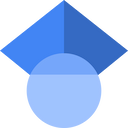Digital communication and chemical structure codification
Abstract:
like an orchestral set piece in that their adequate characterization requires contributions from different perspectives. Definitely, space does not suffice to offer a general overview on all these approaches. A vast volume of literature is available that addresses this aspect (Todeschini and Consonni 2009; Gálvez et al. 2012; Xue and Bajorath 2000; Pogliani 2000; Livingstone 2000; Pozzan 2006; Balaban and Ivanciuc 2000; Garcıa-Domenech et al. 2008). It’s been over 60 years since the first application of digital communication model was applied to the analysis of the compositional diversity of chemical and biological systems (Dancoff and Quastler 1953). Down the road, many more models and theorems typical to the world of digital communication have been applied to chemical systems, and many reviews have been published on these models (Bonchev 2005; Barigye et al. 2014; Dehmer and Mowshowitz 2011). In this report, emphasis will be placed on the most recent trends in the application of digital communication models and theorems in chemical structural codification, through the so-called information indices.
Año de publicación:
2016
Keywords:
Fuente:
 google
googleTipo de documento:
Other
Estado:
Acceso abierto
Áreas de conocimiento:
Áreas temáticas de Dewey:
- Ciencias de la computación
- Ciencias Naturales y Matemáticas
- Química y ciencias afines
Objetivos de Desarrollo Sostenible:
- ODS 9: Industria, innovación e infraestructura
- ODS 17: Alianzas para lograr los objetivos
- ODS 4: Educación de calidad